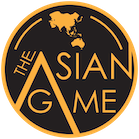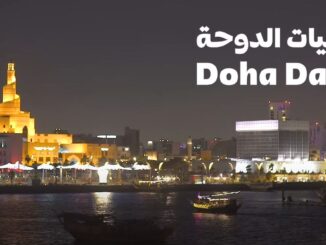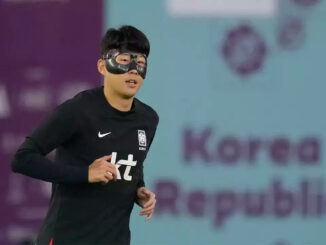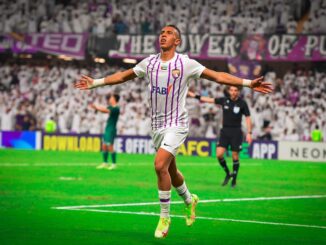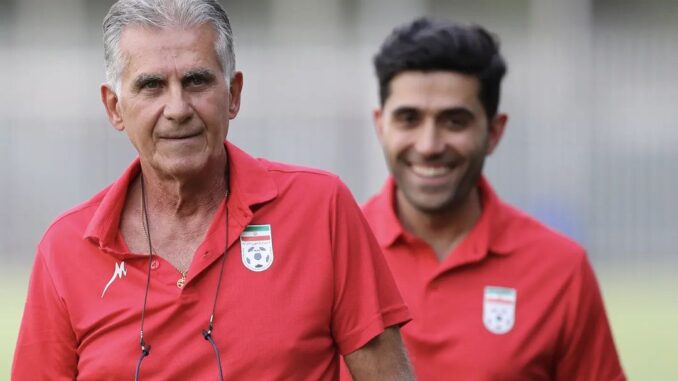

The Asian Game’s coverage of the FIFA World Cup Qatar 2022 is proudly sponsored by SMC.
With World Cup and Asian Cup qualification all wrapped up, September greets us to the beginning of the end to preparations in the run up to both competitions.
For the elite, six Asian nations continue their preparation along the Road to Qatar, now only two months away. Breaking with tradition, four of them have decamped from their home comforts to travel to Europe, with the possibly misguided expectation that organising matches against sides from the same continent as their upcoming World Cup opponents will best prepare them for the tournament kick off in November.
From the glut of new apparel revealed across social media last week, to the new names in the dugout and on the squad list; this September may greet the nearing culmination of World and Asian Cup preparations, rather than the beginning of a new campaign, as we have come to expect in cycles gone by, yet the same anticipation and intrigue is building towards a crucial period of testing and evolution.
Back to the future as Queiroz returns to Team Melli
The headline makers over the last few months have unequivocally been Iran. The drawn-out sacking of Dragan Skocic, and swift re-appointment of Carlos Queiroz has brought back the wave of good feeling around the national team which had recently ebbed away.
Merely months ago, the prospect of worthwhile friendlies during the international break seemed a far distant flight of fancy for Team Melli, yet in basing themselves in Austria in late September to face two fellow World Cup qualifiers in Uruguay and Senegal, we are presented with a credible set of opponents to test the Portuguese coach’s methods straight off the bat.
Queiroz’s initial squad selection rather unsurprisingly feels comfortably familiar for the incoming coach, with a return to some of the more integral, ageing generals that formed the system he’ll no doubt hark back to in his reinstatement.
Return calls for Ramin Rezaeian and Morteza Pouraliganji, who’ve both returned to playing their domestic football in Iran this year, alongside 35-year-old Omid Ebrahimi and Karim Ansarifard, who has only managed two goals this calendar year, suggests familiar faces are being preferred to outright form or potential.
Following such a successful qualification cycle, a swift dismantling of Dragan Skocic’s fresh approach now looks likely from the moment the squad arrives in St. Polten.
An hour away, just outside Vienna, World Cup hosts Qatar couldn’t be in a more different place in their preparations. Three months into their six month stay in Austria, the assumption that they’re better prepared than any of their recently qualified peers is probably a tad optimistic.
Since bedding down as a group, form and fitness concerns have become a repetitive issue. Below par friendly results, most recently against broadly domestic squads from Morocco, Ghana and Jamaica have underwhelmed, while key injuries to Abdullah Al-Ahrak and Assim Madibo haven’t helped matters either.
Injury concerns in mind, the squad remains wafer thin, with the stubborn Felix Sanchez praying that he can keep his side together ahead of their monumental kick off.
With Croatia, Canada and Chile ahead in the coming week, plus yet more glorified B-friendlies likely in the coming month while others return to club football, the purposely muted camp away from the media glare may take a little more time to realise its full potential than once was envisaged.
Japan and Saudi Arabia head to Europe to resolve their selection headaches
In neighbouring Germany, Japan seek to emulate the type of preparation they undertook in the run up to the World Cup in 2014, in which they travelled to Belgium, securing a historic victory over the hosts alongside a draw with the Netherlands.
While the subsequent tournament created fewer happy memories for the Samurai Blue, the precursor is one they’ll seek to emulate in their trip to Dusseldorf in the coming week to face the United States and Ecuador.
Hajime Moriyasu remains a man in the spotlight back home, however. Commanding a growingly impressive set of individual talent, which has neatly hit the ground running at the start of the European season, his more cautious, reactive style of deployment remains a bone of contention within the media.
His selection looks pretty set in stone, as demonstrated in the shirt number allocation released last week, which indicates possibly where he is likely to trim the fat come mid-November.
The form of Kyogo Furuhashi and Daichi Kamada domestically look to have reaffirmed their spots in the squad ahead of key absentees Yuya Osako and Takuma Asano through ill form (at the point of squad reveal anyway, cue a brace this weekend just gone for the Vissel Kobe striker) and injury respectively. Having been integral to Moriyasu throughout qualification, the immediate form of those in possession of a squad place in Germany looks likely to have overtaken them.
Elsewhere, Takehiro Tomiyasu’s return from injury is reassuringly timely, given the injury setback for Ko Itakura, who’ll be sweating on being fit in time for Qatar.
The defence itself remains a moderate concern, with Maya Yoshida ageing rapidly and less than ideal options at full back; it’ll be a key test to see whether Japan’s backline can cope against the next level of attacking ability in the coming week.
Over in Spain, ahead of facing the same pair of opponents, is Saudi Arabia; one of the only Asian World Cup qualifiers emanating resounding positivity months out from the competition.
The Saudi Pro League’s resumption in the last few weeks has started with a bang, benefiting the likes of Salman Al-Faraj, Salem Al-Dawsari and Hassan Al-Tambakti in building some momentum ahead of this national team camp.
Yet, the same regular headaches persist; with a vacant hole at the point of the attack remaining a priority in Herve Renard’s thoughts over the coming couple of months.
First choice striker Saleh Al-Shehri remains out injured, as does his Al-Hilal teammate Abdullah Al-Hamdan. Instead, Renard will have to turn again to Firas Al-Buraikan, the striker, who was Saudi Arabia’s top scorer over the last cycle despite failing to nail down a starting spot, again proving instrumental in the U23 side’s Asian Cup title win over the summer.
The 22-year-old remains an impactful option in the Green Falcons armoury, however, still suffers from being a bit-part player with his club side Al-Fateh this season.
Similar concerns can be labelled of his alternatives with a somewhat bizarre national team recall for Haroune Camara, another young striker that had a big reputation, but who rarely fit in within the national team setup.
Embed from Getty ImagesHis surprise return comes at a time whilst largely playing second fiddle for Al-Ittihad, behind more established big name foreign strikers.
As Renard has pointed out on a number of occasions, the benefit of having such high-quality foreign imports in the domestic league needs to be balanced with the progress of the next generation of Saudi talent; the next week should give us a few more clues to how that’s playing out for their attacking options.
No place like home
The only Asian World Cup qualifier who decided to remain at home for the full window is South Korea, as the Taegeuk Warriors host Costa Rica in Goyang and Cameroon in Seoul this coming week.
Ahead of preparations for a tenth successive World Cup, focus has quickly shifted from their imperious qualification campaign to Paulo Bento’s consistent (some would say inflexible) tactical approach and team selection, as possible question marks start to appear ahead of Qatar.
Despite broadly ignoring him to date, the return to the squad of Lee Kang-in is the selection that has many Korean fans’ pulses racing.
The playmaker has been in frightening form for Mallorca in the early parts of the La Liga season and is seen by many as the late bolter to the squad which could prove to be the difference maker come the World Cup.
With another friendly round squandered, in some people’s minds by failing to test themselves outside of Korea, against a pair of opposition likely to sit back and allow their hosts possession; does this really replicate what we can expect come November though?
Australia are another who’ve chosen to only slightly stray out of their home comforts in arranging a two-legged contest against neighbouring New Zealand to celebrate the Socceroos’ centenary.
The Aussies, who rose to the occasion in qualifying against Peru back in June, will sign off their final match at home before preparations really kick in under renewed positive spirit given the revitalised backing for Graham Arnold’s tactical approach heading into the World Cup.
While New Zealand offer competitive, if not necessarily a strenuous test for Australia, it’s the squad selection that has observers excited ahead of next week’s action.
The return, from his brief international retirement, of Nagoya Grampus’ Mitch Langerak feels to have come nine months too late for the keeper, given both his and current Socceroos’ number one Mathew Ryan’s form has shot in completely different directions since.
The headlines are instead pinpointed in attack, with the injury laden but newly in-form Adam Taggart returning to the fold, alongside the enigmatic Jason Cummings and young sensation Garang Kuol.
That’s only three of a possible six central striking options Arnold is looking to trim down ahead of final selection, as all will be looking for goal scoring opportunities in Brisbane or Auckland over the coming seven days.
Russia become the elephant in the room
While the predominant focus is understandably on those set to prepare for the upcoming World Cup, the remaining sides across the continent who guaranteed their Asian Cup qualification back in June are set to take their first steps towards the tournament proper in this international window.
Not exclusively due to their own preparations, Kyrgyzstan’s hosting of Russia on Saturday has made significant tremors across Asian football in the build up to September.
Following the beginning of the war in Ukraine, political relations with Russia have been severed the world over, the football community being no different. Russia’s exclusion from World Cup qualification and future UEFA competitions has left them adrift from the footballing world. Yet in Asia we’re starting to see an olive branch forming from a number of areas.
Politically speaking, Russia remains close to a number of Asian states – their former Soviet Union neighbours from Central Asia, India, and most prominently China.
There have been numerous suggestions that Russia themselves are ready to discuss a possible move to the AFC; floated in the main by Russian state media. And in the passing few months it’s been Asia that has reached out to its neighbours in a footballing sense.
What meagre transfer activity that has taken place between Russia and the world has involved Asian talent moving in and Russian talent moving out to Asia, with Uzbekistan and Tajikistan forming adequate interim pathways.
The announcement of two friendlies, with Kyrgyzstan this September and Iran in November feeds yet more defection discussions, which are likely to rumble on as Russia’s relations with the rest of Europe remain severed.
The stark difference in reaction, between these friendly announcements and those when Bosnia & Herzegovina were confirmed as Russia’s upcoming opponents this November, where prominent players were quick to threaten to break off from the national team, are stark; a clear signal of the differences between the two confederations and their member associations.
Despite what could be considered as political kryptonite, with continued support for Russia from substantial parts of Asia, plus the prestige and undoubted resources they could potentially bring to the confederation, there’s no hard and fast suggestion which way the AFC will lean if forced into a decision.
This week’s friendly in Bishkek broadly plays second fiddle to the political rumour mill that encircles it. The match, which Russia has already selected a broadly experimental second-string selection for, remains firmly up in the air despite Kyrgyz protestations that the event is due to continue as planned. It matters little, however, if or how this match pans out, the headlines have already been written.
Asian Cup preparation begins
Returning to a more footballing perspective, Thailand’s semi-regular King’s Cup tournament returns for a 48th edition of a rather eclectic history, hosting fellow Asian Cup qualifiers Tajikistan and Malaysia, alongside Trinidad & Tobago.
Embed from Getty ImagesA similar format is running over in Vietnam, as Park Hang-seo’s side host Singapore and India. The latter, having staved off their brief moment in the FIFA doghouse for political interference earlier in the summer, will no doubt see their impassioned fanbase return their laser like scrutiny to that of the much-maligned Igor Stimac’s future in the national team hot seat
Joining their hosts in South Korea, Uzbekistan will look forward to testing themselves at a significantly raised level in facing Cameroon and Costa Rica either side of the Taegeuk Warriors.
Following an immediate rebound in Asian Cup qualification, Srecko Katanec has aligned the senior squad’s focus in preparing for the senior continental tournament next year. Following their U23s making it to the continental final in July, their U20s heading to South America to face Brazil earlier this month, and the U20 Asian Cup set for their shores early next year, structure and optimism seem to be back on the agenda in Uzbek football.
United Arab Emirates under Rodolfo Arruabarrena, following their World Cup playoff defeat to Australia, seem to have made a long overdue restructure to a squad that starts to focus on the next World Cup cycle. The likes of Omar Abdulrahman and Walid Abbas have been left out in favour of a much fresher squad, that hints at a possible transition period ahead of the Asian Cup and beyond for the Emiratis. Alongside Iran and Qatar, UAE are also in Austria to face Paraguay and Venezuela.
Elsewhere, Hong Kong host Myanmar in a two-match series, despite concerns over COVID security overshadowing the organisation of the window. Jordan holds a competitive looking four-team Middle East tournament featuring the best of the rest that featured in the latter rounds of World Cup qualification earlier this year in Syria, Oman and Iraq, with the latter heading into another managerial reign that few expect to last the distance.
Finally, there are home friendlies for Indonesia, who host Curacao twice over the week, and Bahrain who also host Central American opposition in Panama, following their match with Cape Verde.
Only three teams set to feature at the forthcoming Asian Cup haven’t scheduled matches for the week ahead; Lebanon, who’s new coach Aleksandar Ilic strangely opted against a rumoured friendly with Kyrgyzstan in favour of more preparation time with his team, Palestine, who continue to struggle in seeking out competitive opposition during international breaks, and China, who despite releasing Shandong’s Son Jun-ho to feature for Korea this window, will not be sacrificing yet more of their domestic league campaign to accommodate the associated quarantine windows.
September, in any usual World Cup year, would welcome a fresh start for many, but while we’re instead reaching the culmination of the outgoing cycle focus will instead look to see how far each side has come over the last four years.
With qualification out of the way, the stage is set to assess what we can expect both at continental and on the global stage in what promises to be an enthralling nine months for Asian football.
PHOTO: Instagram/teammellifootball
Listen to Episode 91 of The Asian Game Podcast
